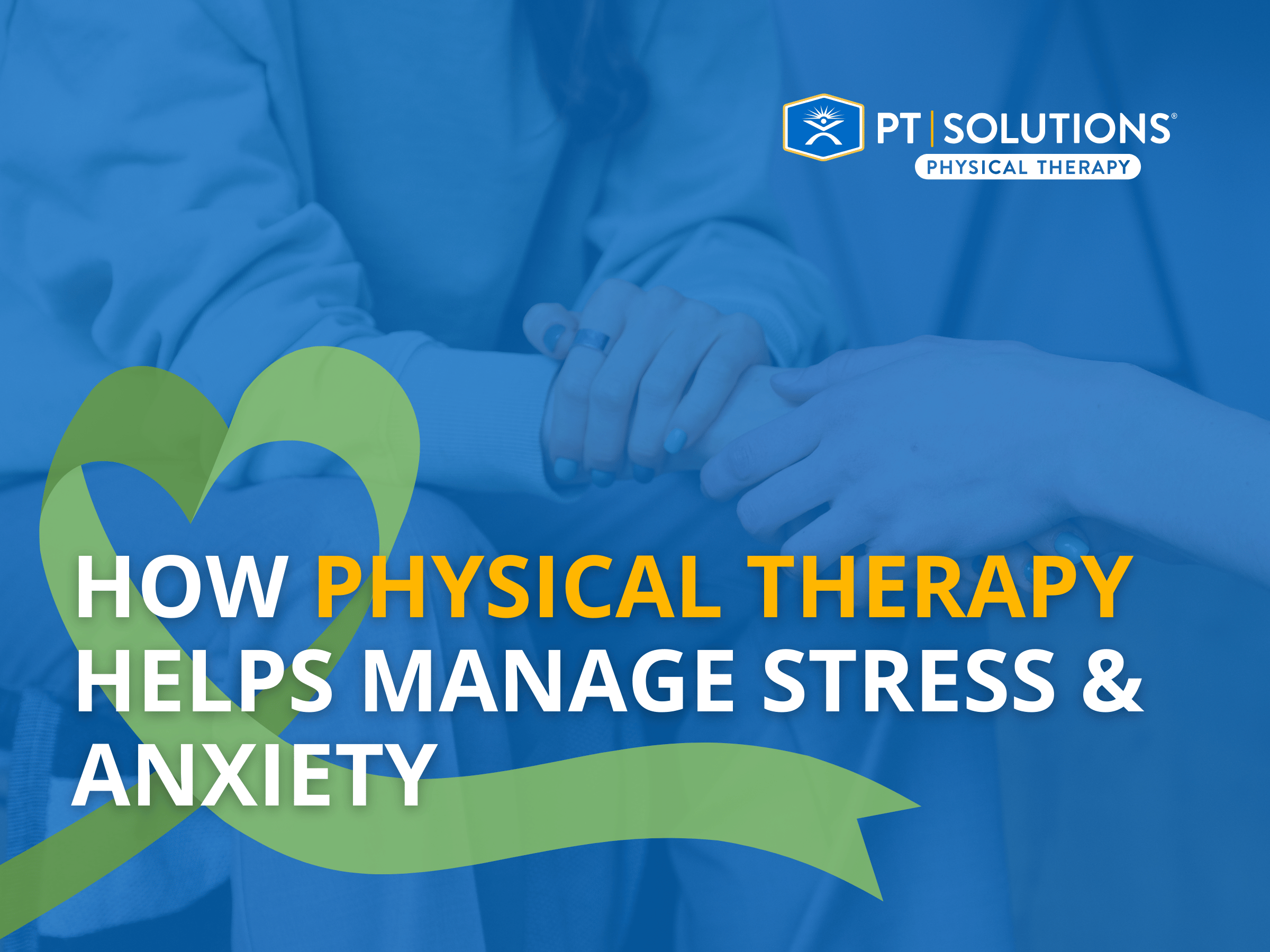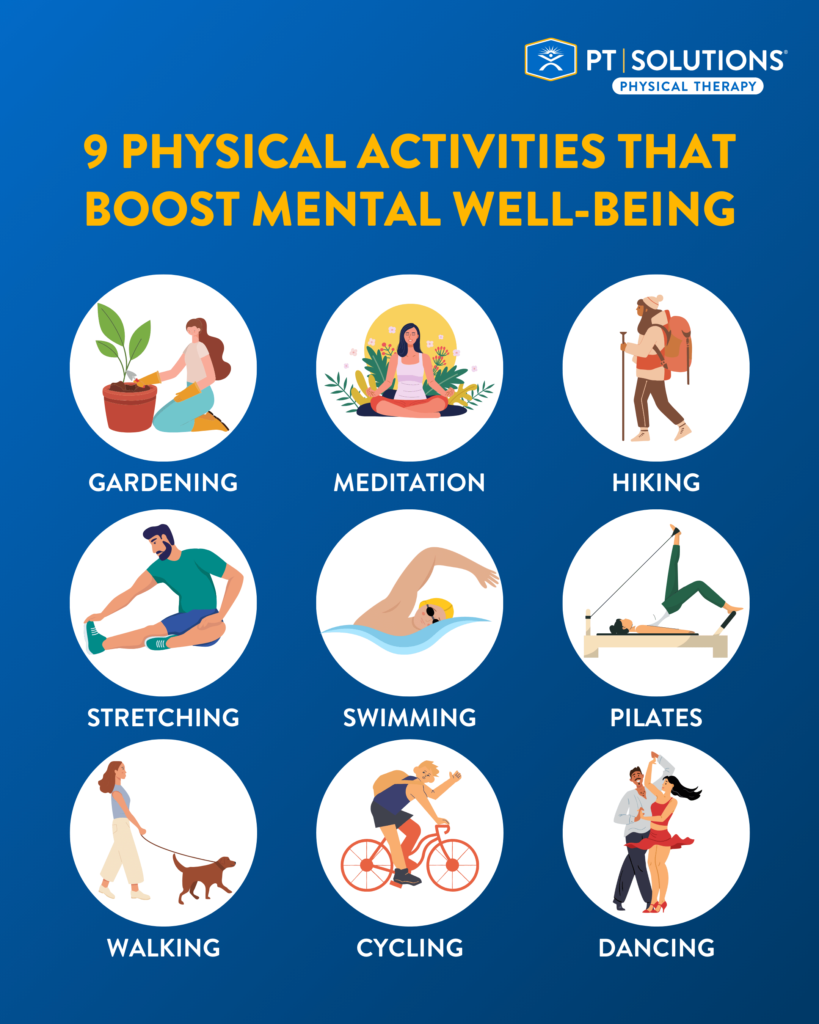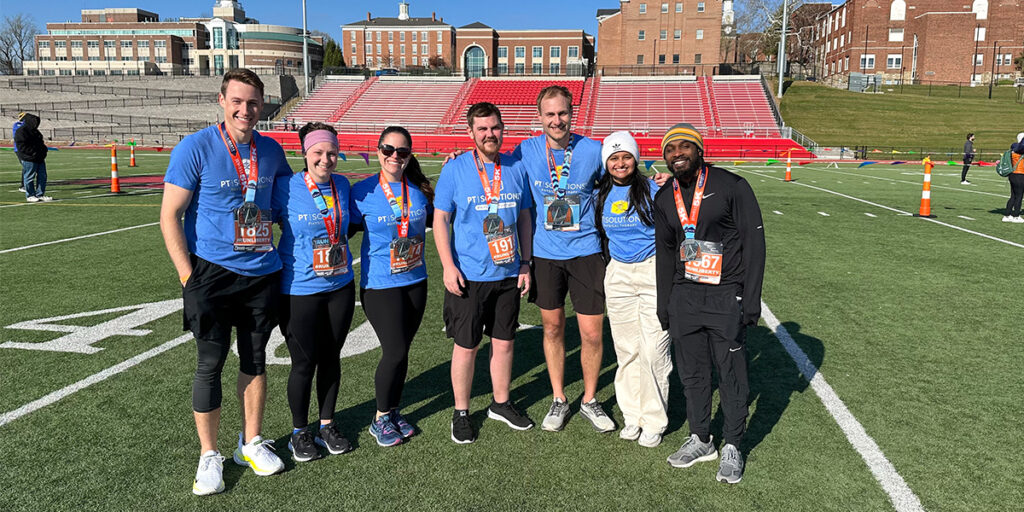Featured Posts
How Physical Therapy Helps Manage Stress & Anxiety
May 21, 2025

In Every Story, There’s Strength – Mental Health Awareness Month
Mental health affects every aspect of our lives—from how we think and feel to how we handle stress and relate to others. As we observe Mental Health Awareness Month, it’s the perfect time to explore how physical therapy can be a powerful tool for managing stress and anxiety. While many associate physical therapy solely with injury recovery, its benefits extend far beyond physical rehabilitation, offering significant support for mental and overall well-being.
How does stress impact your physical health?
When stress and anxiety take hold, they don’t just affect your mind—they manifest physically in your body. Tension headaches, tight muscles, disrupted sleep patterns, and even digestive issues can all stem from prolonged stress. These physical symptoms create a cycle where mental stress causes physical discomfort, which in turn increases mental distress.
Cited in the National Ag Safety Database (NASD), 90% of doctor visits are for stress-related complaints, highlighting the significant impact of stress on physical health. This mind-body connection is at the heart of why physical therapy can be so effective for stress management. By addressing the physical manifestations of stress, physical therapy helps break this cycle and restore balance to both body and mind.
Why is movement important for mental wellness?
Physical activity is one of the most powerful natural interventions for stress and anxiety. According to research in JAMA Psychiatry, regular exercise can be as effective as medication for treating mild to moderate depression and anxiety in some cases. When we move our bodies, several beneficial processes occur simultaneously:
- Endorphin release: Physical activity triggers the release of endorphins, natural mood elevators that create feelings of well-being and reduce pain perception.
- Cortisol regulation: Regular exercise helps regulate stress hormones like cortisol, preventing the damaging effects of chronically elevated levels.
- Improved sleep quality: Physical activity contributes to better sleep patterns, which are often disrupted by anxiety and stress.
- Enhanced brain function: Movement increases blood flow to the brain and promotes neuroplasticity, supporting cognitive function and emotional regulation.
- Muscle tension relief: Physical activity helps release muscle tension that accumulates during periods of stress, reducing physical discomfort.
Research consistently shows that targeted physical activity can significantly reduce symptoms of anxiety and depression while improving overall mental health—making movement medicine for both body and mind.
How does physical therapy activate your relaxation response?
Your body has a built-in mechanism for counteracting stress—the parasympathetic nervous system, often called the “rest and digest” system. When activated, it slows your heart rate, lowers blood pressure, and promotes a sense of calm throughout your body.
Physical therapy incorporates several approaches that help activate this system:
Breathing Techniques
Specialized breathing exercises help stimulate the vagus nerve—a key component of your parasympathetic nervous system. Diaphragmatic breathing patterns naturally calm your body’s stress response, reducing anxiety almost immediately. These techniques can be practiced anywhere, making them accessible tools for daily stress management.
Targeted Manual Techniques
Gentle soft tissue techniques can release areas of physical tension where stress often accumulates, such as the neck, shoulders, and lower back. This physical release not only relieves pain but also signals to your nervous system that it’s safe to relax.
Mindful Movement
Certain types of rhythmic, flowing movements help shift your nervous system out of “fight or flight” mode. These might include gentle stretching sequences, tai chi-inspired movements, or controlled exercises that incorporate breath awareness. The key is the mindful quality of the movement, which helps bring attention to the present moment rather than worrying about the future or ruminating on the past.
Which physical activities best support mental well-being?

The graphic above highlights nine evidence-backed activities known to boost mental well-being, each offering unique benefits for stress and anxiety management:
- Gardening: Combines gentle movement with nature connection, reducing stress hormones and improving mood. The sensory experience of touching soil, smelling plants, and seeing growth has been shown to lower cortisol levels significantly, according to research from the National Library of Medicine.
- Meditation: Though primarily mental, meditation practices incorporate physical elements like posture and breathing that enhance body awareness and promote relaxation, activating the parasympathetic nervous system. Harvard research on meditation confirms these benefits.
- Hiking: Combines cardiovascular benefits with nature exposure, which has been shown to reduce mental fatigue and improve cognitive function. The varied terrain also encourages mindfulness as you navigate the path.
- Stretching: Releases physical tension and can be paired with breathing techniques for maximum stress reduction. Regular stretching improves circulation to tense muscles while promoting mind-body awareness.
- Swimming: The combination of rhythmic breathing, water pressure, and full-body movement creates a uniquely calming effect on the nervous system. The buoyancy of water also reduces physical strain, making it accessible for many ability levels.
- Pilates: Focuses on the mind-body connection, core strength, and controlled breathing—all beneficial for anxiety management. The precise, intentional movements require focus that can serve as a form of moving meditation.
- Walking: One of the most accessible forms of exercise, walking regularly can significantly reduce anxiety and depression symptoms. Harvard Health reports that even a 10-minute walk can produce up to two hours of improved mood.
- Cycling: Provides cardiovascular benefits while requiring focus and rhythm that can create a meditative state. The repetitive motion helps regulate breathing patterns and promotes stress relief.
- Dancing: Combines physical activity with social connection and creative expression—all powerful mental health boosters. The American Dance Therapy Association notes that dancing also releases endorphins while encouraging joy and playfulness.
Finding activities that you genuinely enjoy is crucial for consistency. Even small amounts of these activities can provide significant mental health benefits when practiced regularly.
How can movement create sustainable stress management?
Movement-based approaches to stress and anxiety provide you with skills and strategies that can complement other treatments and support long-term well-being. According to the National Institute of Mental Health, a comprehensive approach to physical wellness can help develop:
- Body awareness: Learning to recognize early signs of tension allows you to address stress before it overwhelms you.
- Movement habits: Incorporating short movement breaks throughout your day can prevent stress accumulation.
- Breathing control: Mastering stress-reducing breathing techniques gives you a portable tool for managing anxiety anywhere.
- Sleep hygiene: Understanding how different types of physical activity affect your sleep can help optimize your rest.
- Pain management: Addressing stress-related pain through movement can help break the pain-anxiety cycle.
The goal is building a toolkit of strategies for long-term stress management and mental well-being that can work alongside other approaches you might be using to support your health.
Why is the mind-body connection important for healing?
Modern science increasingly confirms what many traditional healing practices have long recognized: the mind and body are inseparable aspects of one integrated system. The Mayo Clinic emphasizes this understanding as fundamental to how physical therapy approaches stress and anxiety:
- Bidirectional influence: Mental states affect physical health, and physical states impact mental well-being. Addressing one naturally influences the other.
- Stress patterns: Each person holds stress in unique physical patterns that can be identified and addressed through appropriate movement.
- Nervous system regulation: Learning to regulate your nervous system through physical practices creates resilience to stress.
- Embodied emotions: Emotions that aren’t processed often manifest as physical tension or pain, which movement can help release.
- Present moment awareness: Physical sensation provides an anchor to the present moment, counteracting anxiety about the future.
Physical therapy works within this integrated framework, recognizing that physical interventions have mental effects, and mental shifts create physical changes.
How can small changes make a big difference?
Mental Health Awareness Month reminds us that strength comes in many forms—including the daily choices we make to support our well-being. The connection between physical movement and mental health is powerful, offering natural ways to manage stress and anxiety as part of a comprehensive wellness approach.
Even small steps toward incorporating movement into your routine can make a significant difference. The U.S. Department of Health and Human Services notes that even short bouts of physical activity provide health benefits. Whether it’s a five-minute stretching session during your lunch break, a walk around your neighborhood after dinner, or trying one of the nine activities highlighted in this article, you’re building resilience with each movement.
Consider these simple ways to integrate more movement into your daily life:
- Set an alarm to stand up and stretch for one minute every hour
- Take phone calls while walking instead of sitting
- Park farther from store entrances to add more steps to your day
- Choose stairs over elevators when possible
- Stretch gently for five minutes before bed to release the day’s tension
Learn how much physical activity adults need each week—plus tips for making it part of your daily routine—in our blog, How Much Physical Activity Do Adults Need Per Week?
Where can you find support for your wellness journey?
If stress and anxiety are significantly impacting your quality of life, consider speaking with a healthcare provider about how physical therapy might complement your wellness plan. Physical therapy can provide personalized guidance on movement strategies that address your specific needs and challenges.
At PT Solutions, we believe in the power of movement to transform both physical and mental health. Find a clinic near you to learn more about how movement can be part of your mental wellness journey.



